-
 Bitcoin
Bitcoin $106,754.6083
1.33% -
 Ethereum
Ethereum $2,625.8249
3.80% -
 Tether USDt
Tether USDt $1.0001
-0.03% -
 XRP
XRP $2.1891
1.67% -
 BNB
BNB $654.5220
0.66% -
 Solana
Solana $156.9428
7.28% -
 USDC
USDC $0.9998
0.00% -
 Dogecoin
Dogecoin $0.1780
1.14% -
 TRON
TRON $0.2706
-0.16% -
 Cardano
Cardano $0.6470
2.77% -
 Hyperliquid
Hyperliquid $44.6467
10.24% -
 Sui
Sui $3.1128
3.86% -
 Bitcoin Cash
Bitcoin Cash $455.7646
3.00% -
 Chainlink
Chainlink $13.6858
4.08% -
 UNUS SED LEO
UNUS SED LEO $9.2682
0.21% -
 Avalanche
Avalanche $19.7433
3.79% -
 Stellar
Stellar $0.2616
1.64% -
 Toncoin
Toncoin $3.0222
2.19% -
 Shiba Inu
Shiba Inu $0.0...01220
1.49% -
 Hedera
Hedera $0.1580
2.75% -
 Litecoin
Litecoin $87.4964
2.29% -
 Polkadot
Polkadot $3.8958
3.05% -
 Ethena USDe
Ethena USDe $1.0000
-0.04% -
 Monero
Monero $317.2263
0.26% -
 Bitget Token
Bitget Token $4.5985
1.68% -
 Dai
Dai $0.9999
0.00% -
 Pepe
Pepe $0.0...01140
2.44% -
 Uniswap
Uniswap $7.6065
5.29% -
 Pi
Pi $0.6042
-2.00% -
 Aave
Aave $289.6343
6.02%
Time-sharing chart V-shaped reversal: The correct posture for intraday bottom-fishing?
A V-shaped reversal in crypto trading signals a sharp price drop followed by a quick rebound, offering intraday traders potential profit opportunities when confirmed with volume and indicators.
Jun 15, 2025 at 12:00 am
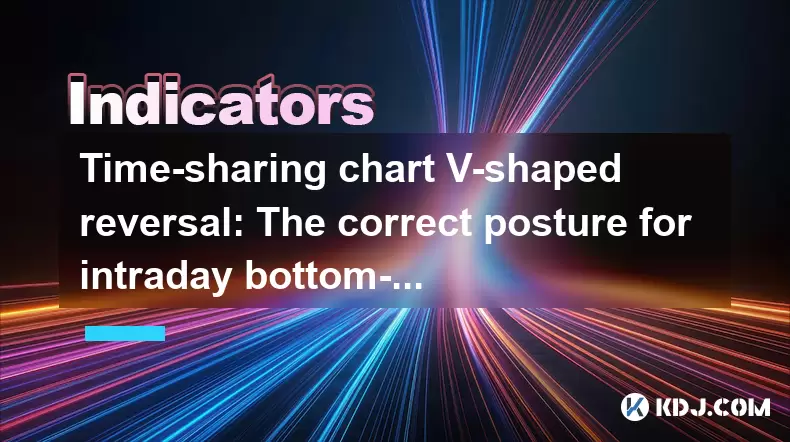
Understanding the Time-Sharing Chart V-Shaped Reversal
In cryptocurrency trading, the time-sharing chart is a critical tool for intraday traders. It shows price movements at regular intervals—usually every minute or five minutes—within a single trading day. A V-shaped reversal occurs when the price sharply drops and then quickly recovers, forming a "V" pattern on the chart. This phenomenon often indicates a sudden market panic followed by a rapid recovery in sentiment.
The key to identifying a V-shaped reversal lies in recognizing the sharp decline and subsequent rebound within a short time frame. Traders who understand this pattern can position themselves early for potential profit opportunities. However, not all dips are valid reversals, so it’s essential to confirm the strength of the bounce before entering a trade.
Why the V-Shaped Reversal Matters in Intraday Trading
For intraday bottom-fishing, timing is everything. The V-shaped reversal offers a visual cue that the selling pressure has exhausted and buyers have stepped in decisively. This makes it a powerful signal for traders looking to enter long positions quickly after a dip.
However, many traders misinterpret short-term volatility as a reversal. To avoid false signals, it's crucial to combine volume analysis with price action. When a V-shaped drop coincides with a spike in volume during the rebound, it suggests institutional or large-scale participation, increasing the likelihood of a genuine reversal.
Key Indicators to Confirm a Valid V-Shaped Reversal
- Volume Spike During the Rebound: A surge in buying volume supports the legitimacy of the reversal.
- Strong Candlestick Pattern at the Bottom: Look for bullish engulfing patterns or hammer candles near the bottom of the V.
- Moving Average Confluence: If the reversal occurs near a key moving average like the 20-period EMA, it adds credibility to the setup.
- RSI Divergence: An RSI reading dipping below 30 and then showing divergence can indicate oversold conditions followed by a quick recovery.
Each of these indicators should be used together to filter out weak setups and increase the probability of successful entries.
Step-by-Step Guide to Executing an Intraday Trade Based on V-Shaped Reversal
- Identify the Sharp Drop: Monitor the time-sharing chart for a sudden and steep price decline over a few minutes.
- Wait for the First Strong Bounce: Don’t rush into a trade immediately after the drop. Wait for at least one strong candle to close above the low.
- Check Volume and Indicator Confirmation: Ensure there is a noticeable increase in volume and alignment with technical indicators like RSI or MACD.
- Place Entry Order Above the First Reversal Candle: Use a limit order just above the high of the first bullish candle after the reversal.
- Set Stop-Loss Below the Recent Low: Protect your position by placing a stop-loss slightly below the lowest point of the V.
- Take Profit at Resistance Levels or Trail the Stop: Depending on the momentum, either take partial profits at known resistance levels or trail your stop to ride the trend.
This structured approach ensures that trades are based on objective criteria rather than emotions or guesswork.
Common Mistakes to Avoid When Trading the V-Shaped Reversal
Many traders fall into the trap of chasing the reversal too early. Entering before confirmation often leads to losses if the bounce fails. Another common mistake is ignoring broader market conditions—such as news events or macro trends—that might influence short-term volatility.
Additionally, failing to set proper risk parameters can result in significant drawdowns. Always ensure that each trade fits within your overall risk management framework, typically risking no more than 1–2% of your capital per trade.
How to Integrate V-Shaped Reversals into a Broader Intraday Strategy
While V-shaped reversals can be powerful standalone signals, they work best when integrated into a comprehensive trading plan. Combining them with support/resistance levels, Fibonacci retracements, or breakout strategies can enhance accuracy.
For instance, a V-shaped reversal occurring near a major psychological level (like $30,000 for Bitcoin) increases its significance. Similarly, aligning the reversal with a breakout from a consolidation pattern can provide stronger conviction for trade execution.
Frequently Asked Questions
Q: Can the V-shaped reversal be applied to cryptocurrencies other than Bitcoin?
Yes, the V-shaped reversal pattern is applicable across various cryptocurrencies, including Ethereum, Solana, and altcoins. The key is to ensure sufficient liquidity and volume to validate the reversal.
Q: How long does a V-shaped reversal typically last on a time-sharing chart?
A complete V-shaped reversal usually unfolds within 5 to 30 minutes on a 1-minute or 5-minute time-sharing chart. The sharper the V, the faster the reversal tends to occur.
Q: Should I use leverage when trading V-shaped reversals?
Using leverage requires caution. While it can amplify gains, it also increases the risk of liquidation, especially in volatile crypto markets. Conservative leverage (e.g., 2x–5x) is advisable for beginners.
Q: What timeframe is most suitable for identifying V-shaped reversals?
The 1-minute and 5-minute charts are ideal for spotting intraday V-shaped reversals. Longer timeframes may miss the sharpness of the pattern, reducing its effectiveness for quick trades.
Disclaimer:info@kdj.com
The information provided is not trading advice. kdj.com does not assume any responsibility for any investments made based on the information provided in this article. Cryptocurrencies are highly volatile and it is highly recommended that you invest with caution after thorough research!
If you believe that the content used on this website infringes your copyright, please contact us immediately (info@kdj.com) and we will delete it promptly.
- 2025-W Uncirculated American Gold Eagle and Dr. Vera Rubin Quarter Mark New Products
- 2025-06-13 06:25:13
- Ruvi AI (RVU) Leverages Blockchain and Artificial Intelligence to Disrupt Marketing, Entertainment, and Finance
- 2025-06-13 07:05:12
- H100 Group AB Raises 101 Million SEK (Approximately $10.6 Million) to Bolster Bitcoin Reserves
- 2025-06-13 06:25:13
- Galaxy Digital CEO Mike Novogratz Says Bitcoin Will Replace Gold and Go to $1,000,000
- 2025-06-13 06:45:13
- Trust Wallet Token (TWT) Price Drops 5.7% as RWA Integration Plans Ignite Excitement
- 2025-06-13 06:45:13
- Ethereum (ETH) Is in the Second Phase of a Three-Stage Market Cycle
- 2025-06-13 07:25:13
Related knowledge
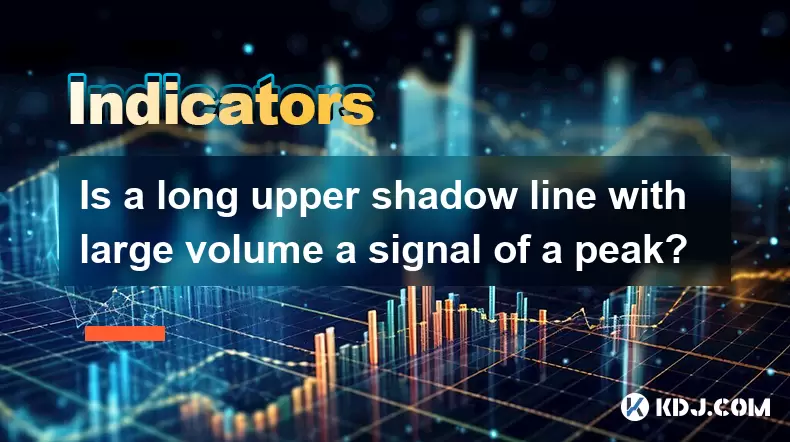
Is a long upper shadow line with large volume a signal of a peak?
Jun 17,2025 at 05:07am
Understanding the Long Upper Shadow LineA long upper shadow line, often referred to as a shooting star or inverted hammer depending on its location in a chart, is a candlestick pattern that indicates potential reversal from an uptrend. This pattern forms when prices rise significantly during the trading period but then fall back to close near the openin...

How to confirm the effectiveness of the average price line support in the time-sharing chart?
Jun 17,2025 at 12:56am
Understanding the Time-Sharing Chart and Its RelevanceIn cryptocurrency trading, time-sharing charts play a crucial role in analyzing short-term price movements. These charts typically display price fluctuations over a specific period, often ranging from minutes to hours. Traders rely on them to make quick decisions based on real-time data. The average ...

What does it mean when the momentum indicator breaks above the zero axis?
Jun 17,2025 at 12:43am
Understanding the Momentum IndicatorThe momentum indicator is a technical analysis tool used to measure the speed or velocity of price movements in cryptocurrency markets. It helps traders identify potential trend reversals, overbought or oversold conditions, and confirms existing trends. The indicator typically oscillates around a zero line, with value...
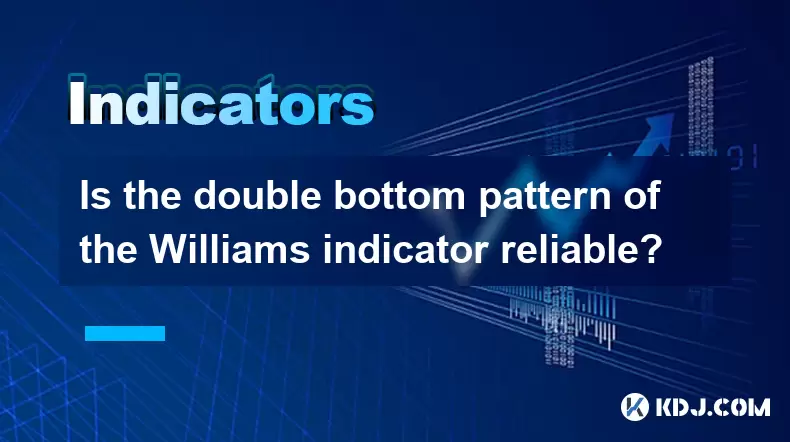
Is the double bottom pattern of the Williams indicator reliable?
Jun 17,2025 at 03:56am
Understanding the Williams Indicator and Its SignificanceThe Williams %R indicator, often referred to as Williams Percent Range, is a momentum oscillator used in technical analysis to identify overbought or oversold conditions in the market. Developed by Larry Williams, this indicator fluctuates between 0 and -100, with readings above -20 indicating ove...
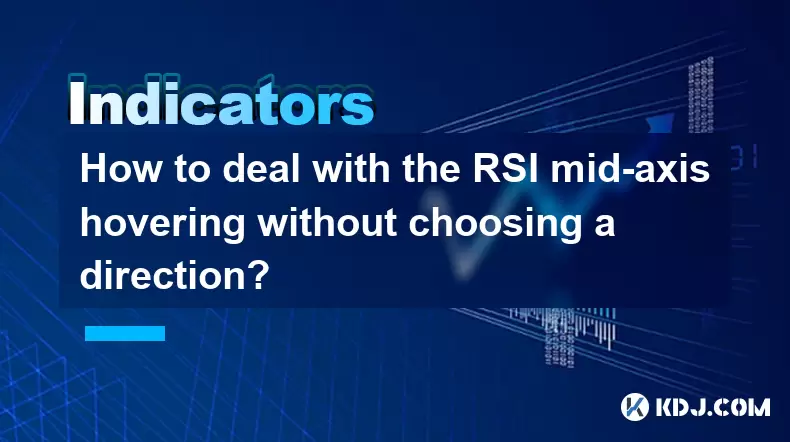
How to deal with the RSI mid-axis hovering without choosing a direction?
Jun 17,2025 at 02:02am
Understanding RSI Mid-Axis Hovering in Cryptocurrency TradingThe Relative Strength Index (RSI) is a popular momentum oscillator used by traders to assess whether an asset is overbought or oversold. In cryptocurrency markets, it's common for the RSI to hover around its mid-axis, typically at the 50 level, without showing a clear upward or downward trend....
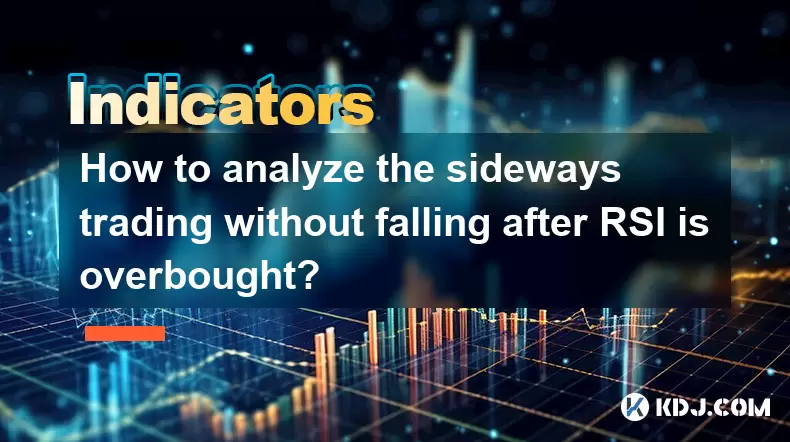
How to analyze the sideways trading without falling after RSI is overbought?
Jun 17,2025 at 04:14am
Understanding RSI and Its Role in Cryptocurrency TradingThe Relative Strength Index (RSI) is a momentum oscillator used to measure the speed and change of price movements. In the context of cryptocurrency trading, it helps traders identify potential overbought or oversold conditions. When the RSI exceeds 70, it typically signals that an asset may be ove...

Is a long upper shadow line with large volume a signal of a peak?
Jun 17,2025 at 05:07am
Understanding the Long Upper Shadow LineA long upper shadow line, often referred to as a shooting star or inverted hammer depending on its location in a chart, is a candlestick pattern that indicates potential reversal from an uptrend. This pattern forms when prices rise significantly during the trading period but then fall back to close near the openin...

How to confirm the effectiveness of the average price line support in the time-sharing chart?
Jun 17,2025 at 12:56am
Understanding the Time-Sharing Chart and Its RelevanceIn cryptocurrency trading, time-sharing charts play a crucial role in analyzing short-term price movements. These charts typically display price fluctuations over a specific period, often ranging from minutes to hours. Traders rely on them to make quick decisions based on real-time data. The average ...

What does it mean when the momentum indicator breaks above the zero axis?
Jun 17,2025 at 12:43am
Understanding the Momentum IndicatorThe momentum indicator is a technical analysis tool used to measure the speed or velocity of price movements in cryptocurrency markets. It helps traders identify potential trend reversals, overbought or oversold conditions, and confirms existing trends. The indicator typically oscillates around a zero line, with value...

Is the double bottom pattern of the Williams indicator reliable?
Jun 17,2025 at 03:56am
Understanding the Williams Indicator and Its SignificanceThe Williams %R indicator, often referred to as Williams Percent Range, is a momentum oscillator used in technical analysis to identify overbought or oversold conditions in the market. Developed by Larry Williams, this indicator fluctuates between 0 and -100, with readings above -20 indicating ove...

How to deal with the RSI mid-axis hovering without choosing a direction?
Jun 17,2025 at 02:02am
Understanding RSI Mid-Axis Hovering in Cryptocurrency TradingThe Relative Strength Index (RSI) is a popular momentum oscillator used by traders to assess whether an asset is overbought or oversold. In cryptocurrency markets, it's common for the RSI to hover around its mid-axis, typically at the 50 level, without showing a clear upward or downward trend....

How to analyze the sideways trading without falling after RSI is overbought?
Jun 17,2025 at 04:14am
Understanding RSI and Its Role in Cryptocurrency TradingThe Relative Strength Index (RSI) is a momentum oscillator used to measure the speed and change of price movements. In the context of cryptocurrency trading, it helps traders identify potential overbought or oversold conditions. When the RSI exceeds 70, it typically signals that an asset may be ove...
See all articles

























































































